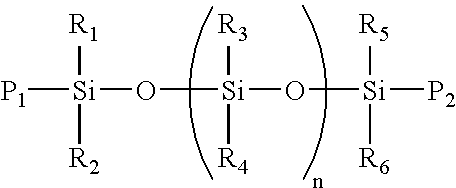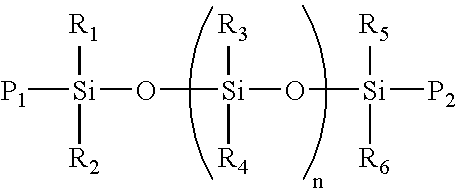Room temperature curable water-based mold release agent for composite materials
a water-based mold and composite material technology, applied in the field of semi-permanent water-based mold release agents for composite materials, can solve the problems of affecting the mold release agent transfer to the molded parts, the molds themselves are quite large, and are not equipped with heating equipment,
- Summary
- Abstract
- Description
- Claims
- Application Information
AI Technical Summary
Benefits of technology
Problems solved by technology
Method used
Image
Examples
example
[0045] A test was performed to measure the degree of detrimental transfer of mold release agent to composite surfaces molded and released using the invented mold release agent. Five sheets of prepreg fiber-mats or plies were laid and molded on a mold surface that had been previously coated with the invented mold release agent at room temperature as described above. The resulting molded composite was then adhered to the surface of another composite part using Hysol EA 9695 adhesive as known in the art. The bond thickness was 5 mils. The bond strength was measured using an Instron machine. Bond tensile strength and failure mode were each noted and recorded and are provided below in Table 4.
TABLE 4Experimental post-bond adhesive failure mode datafor adhered composite parts demolded using the moldrelease agent according to the inventionPeriod of storageof mold releaseTensile bondagent (days)strength (psi)Failure mode 0*1275Cohesive 91331Cohesive361398Cohesive451605Cohesive541070Cohesi...
PUM
| Property | Measurement | Unit |
|---|---|---|
| Temperature | aaaaa | aaaaa |
| Temperature | aaaaa | aaaaa |
| Temperature | aaaaa | aaaaa |
Abstract
Description
Claims
Application Information
 Login to View More
Login to View More - R&D
- Intellectual Property
- Life Sciences
- Materials
- Tech Scout
- Unparalleled Data Quality
- Higher Quality Content
- 60% Fewer Hallucinations
Browse by: Latest US Patents, China's latest patents, Technical Efficacy Thesaurus, Application Domain, Technology Topic, Popular Technical Reports.
© 2025 PatSnap. All rights reserved.Legal|Privacy policy|Modern Slavery Act Transparency Statement|Sitemap|About US| Contact US: help@patsnap.com


